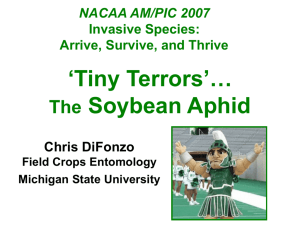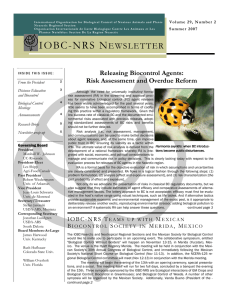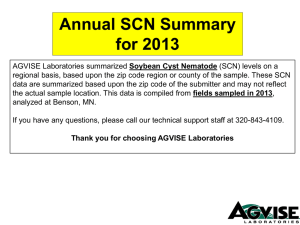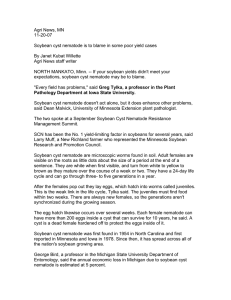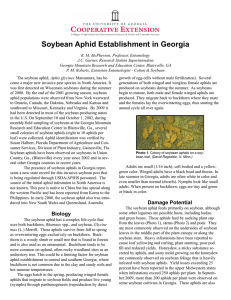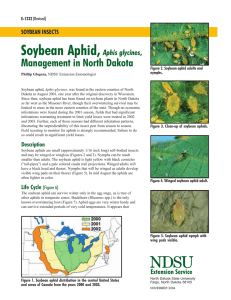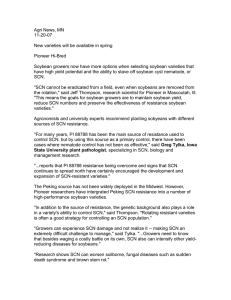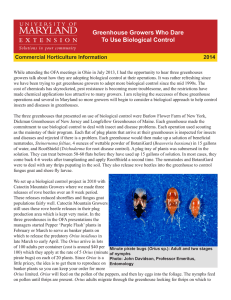Primary Review: Transcript profiling of Nematode and Aphid Infectome on... Together, the soybean aphid and the soybean cyst nematode account... yield reduction of the soybean crop. This proposal aims to...
advertisement
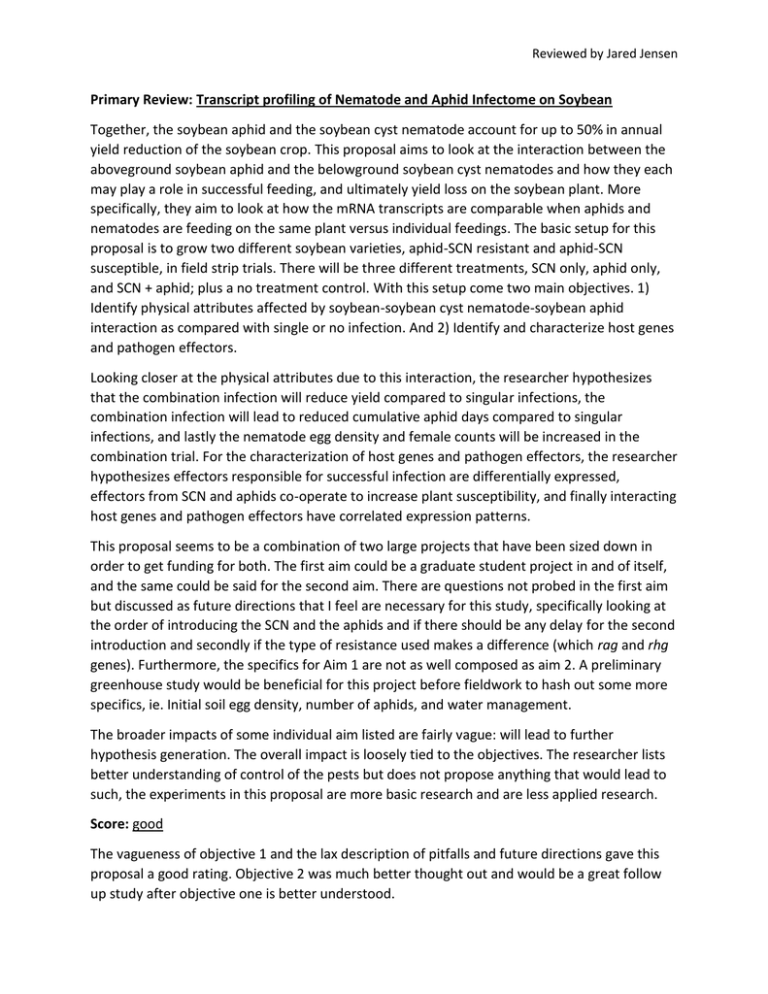
Reviewed by Jared Jensen Primary Review: Transcript profiling of Nematode and Aphid Infectome on Soybean Together, the soybean aphid and the soybean cyst nematode account for up to 50% in annual yield reduction of the soybean crop. This proposal aims to look at the interaction between the aboveground soybean aphid and the belowground soybean cyst nematodes and how they each may play a role in successful feeding, and ultimately yield loss on the soybean plant. More specifically, they aim to look at how the mRNA transcripts are comparable when aphids and nematodes are feeding on the same plant versus individual feedings. The basic setup for this proposal is to grow two different soybean varieties, aphid-SCN resistant and aphid-SCN susceptible, in field strip trials. There will be three different treatments, SCN only, aphid only, and SCN + aphid; plus a no treatment control. With this setup come two main objectives. 1) Identify physical attributes affected by soybean-soybean cyst nematode-soybean aphid interaction as compared with single or no infection. And 2) Identify and characterize host genes and pathogen effectors. Looking closer at the physical attributes due to this interaction, the researcher hypothesizes that the combination infection will reduce yield compared to singular infections, the combination infection will lead to reduced cumulative aphid days compared to singular infections, and lastly the nematode egg density and female counts will be increased in the combination trial. For the characterization of host genes and pathogen effectors, the researcher hypothesizes effectors responsible for successful infection are differentially expressed, effectors from SCN and aphids co-operate to increase plant susceptibility, and finally interacting host genes and pathogen effectors have correlated expression patterns. This proposal seems to be a combination of two large projects that have been sized down in order to get funding for both. The first aim could be a graduate student project in and of itself, and the same could be said for the second aim. There are questions not probed in the first aim but discussed as future directions that I feel are necessary for this study, specifically looking at the order of introducing the SCN and the aphids and if there should be any delay for the second introduction and secondly if the type of resistance used makes a difference (which rag and rhg genes). Furthermore, the specifics for Aim 1 are not as well composed as aim 2. A preliminary greenhouse study would be beneficial for this project before fieldwork to hash out some more specifics, ie. Initial soil egg density, number of aphids, and water management. The broader impacts of some individual aim listed are fairly vague: will lead to further hypothesis generation. The overall impact is loosely tied to the objectives. The researcher lists better understanding of control of the pests but does not propose anything that would lead to such, the experiments in this proposal are more basic research and are less applied research. Score: good The vagueness of objective 1 and the lax description of pitfalls and future directions gave this proposal a good rating. Objective 2 was much better thought out and would be a great follow up study after objective one is better understood.


